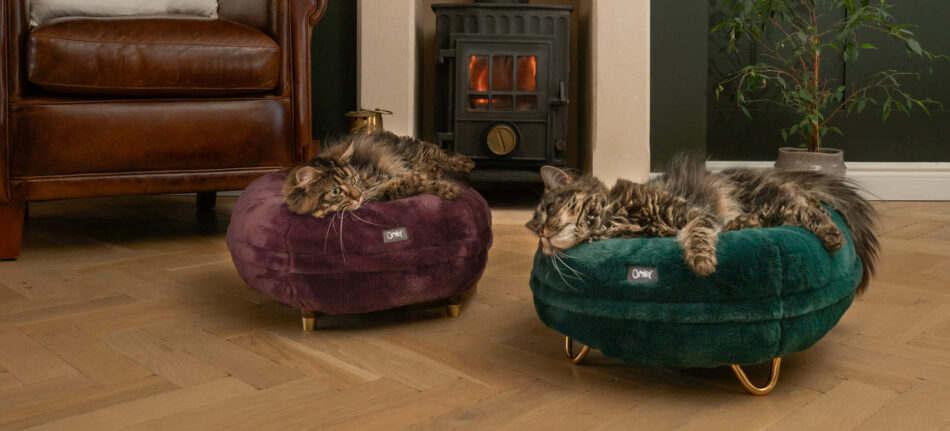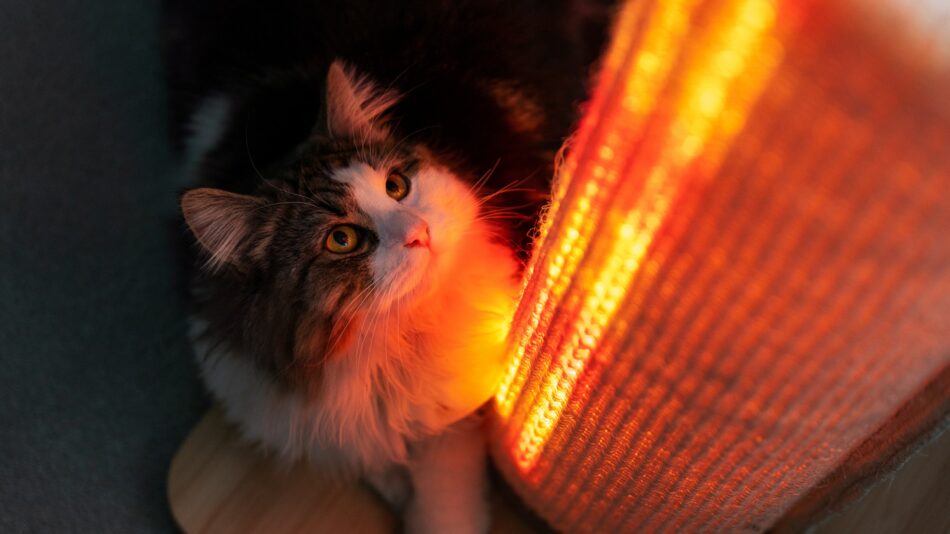Cats and cold weather
Cats and cold weather don’t always mix. Some cats relish exploring in the snow and ice, while others prefer to relax in the comfort of the great indoors. No matter where your cat’s interests lie, learn about the biological changes they’re experiencing this time of year, and find out how to support them throughout the winter season.
Does the cold affect cats?
Like all animals, cats are in tune with seasonal changes— and winter is no exception. Even cats that spend all of their time indoors aren’t exempt from biological shifts throughout the year. Here are some common changes you’ll notice from your feline during the winter months.
Changes in your cat’s coat
As the number of daylight hours dwindles toward the end of fall, your cat will have shed their undercoat to regrow a more dense coat for the winter. This natural process is triggered by the shorter days, and occurs in all cats — both indoor and outdoor. Some owners even notice their cat’s winter coat taking on a slightly different color or texture than during the rest of the year.
Your cat will be busy keeping up with their new winter attire, and you can aid them in their endeavor by brushing them daily. More hair can also mean more hairballs, so monitor your cat’s digestion closely. Avoid brushes that strip them of their undercoat and don’t dress your cat in pet clothing, as both of these can damage the protective undercoat they’ve worked so hard to grow.
Colder weather is for catnapping
Cats are professional nappers all year round, but you may notice an uptick in their snoozing schedule during the winter. With the world outside falling mostly dormant and their window-watching opportunities limited, most cats opt for extra slumber during the day. This is especially true if you keep your home on the cooler side, which will give your cat extra encouragement to find a warm place to curl up for a catnap. Keep a comfy cat bed in a warm location like under a window with afternoon sun, or near your fireplace to help your cat catch some quality sleep.
But all of this sleeping comes with the risk of your cat gaining weight over the winter. Weigh your cat regularly to make sure they aren’t packing on seasonal pounds, and avoid offering extra treats. Furnish your home with an indoor cat tree to encourage more movement during their waking hours, and offer a cat scratching post to stretch their muscles. Both of these encourage and support natural behaviors that will keep your cat’s mind and body engaged and active.
Do cats get too cold?
While it’s very unlikely that indoor cats will get too cold, this is a very real possibility for cats that spend time outdoors. When temperatures or wind chill create conditions below freezing, cats can experience hypothermia, or low body temperature. Signs of hypothermia in cats include:
- Lethargy
- Shivering
- Slow heart rate and breathing
- Dilated pupils
- Pale mucous membranes
- Uncoordinated movements
To avoid hypothermia in your cat, keep them inside when temperatures fall below freezing. If your cat insists on going outside, consider attaching a catio to an exterior door or window. This will give your cat access to the outside world while keeping them close to home. Offer cat run accessories like an outdoor cat tree and cat run covers to give them ample space to escape the elements.
Dangers for cats in the winter
In addition to a too-low body temperature, there are other concerns that winter can bring for cats in particular. The most notable areas for caution are:
- Antifreeze and de-icing chemicals. These are sweet-smelling and pique a cat’s curiosity, but they’re highly toxic. Don’t let your cat roam during the winter months, and clean their feet promptly if they walk across any surfaces that have been treated for ice.
- Cats hiding in engine blocks. A car that has recently been parked and turned off will radiate warmth — which will entice cats that are out in the cold. A cold cat will crawl up into the engine block from underneath a vehicle, which puts it in a very dangerous position when the engine starts. Always check under the hood of your car before starting it in the winter, particularly if your cat frequents where you park.
- Opportunistic predators. Predators are also feeling the effects of winter, and their hunger can turn their attention to your cat. Keep your cat inside during dawn and dusk, which are peak predator hours, and keep them close to home in a cat run to prevent wandering.
Omlet and your cats
We want you to be able to keep your cat safely supported and entertained throughout the winter. That’s why we invented products like the Catio, Switch Cat Scratcher, and the Indoor Cat Tree to channel their inner nature in a safe environment. Keep your cats occupied during the cold months, and the rest of the year, with cat products designed to bring you and your cats closer than ever.
This entry was posted in Cats


